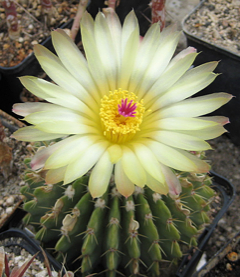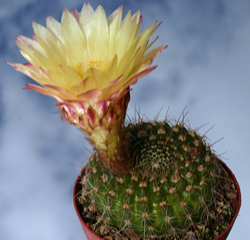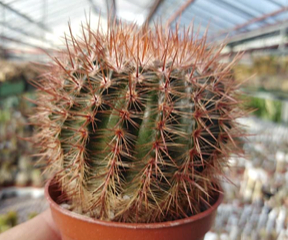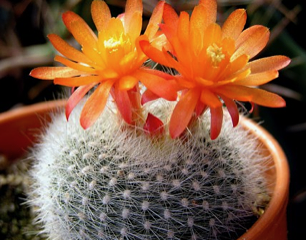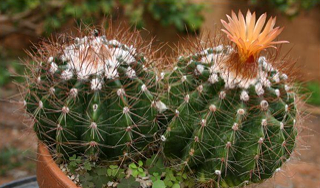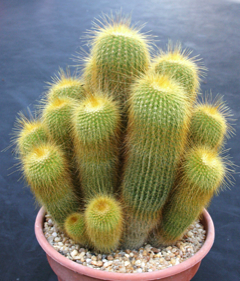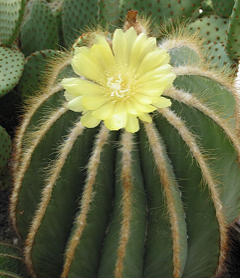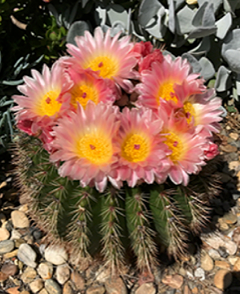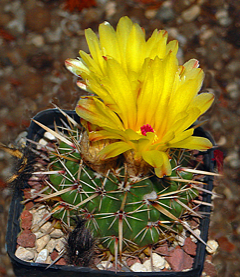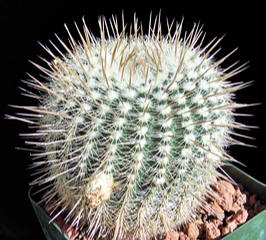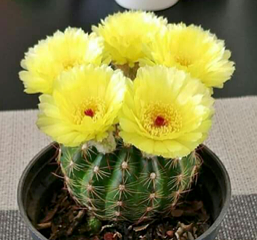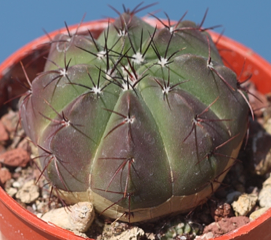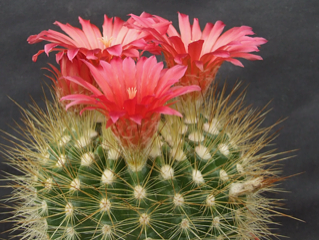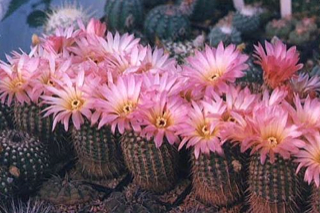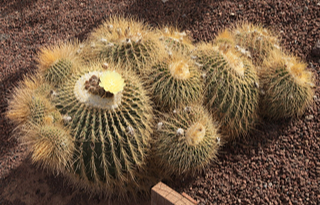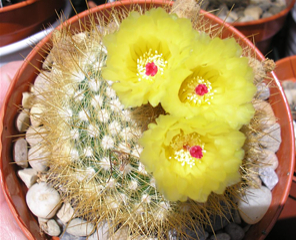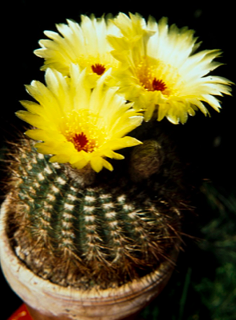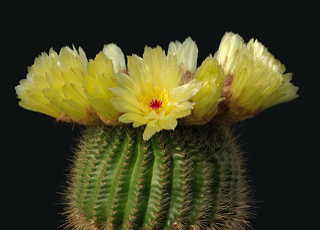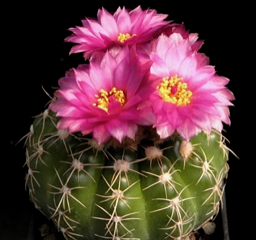Submitted by: Jim Tanner
Parodia is a genus of flowering plants in the cactus family Cactaceae, native to the uplands of Argentina, and Bolivia. The genus is named after Domingo Parodi, one of the early investigators of the flora of Paraguay. In 1986, some 50 species many of which were transferred from Eriocactus, Notocactus and Wigginsia were assigned to be Parodia. Then in 2010, molecular studies deemed that Parodia and Notocactus had separate evolutionary patterns. So, many references have changed the nomenclature back to include Notocactus, Eriocephala, Parodia and Wigginsia as a Notocactus tribe. Molecular studies are still being performed on specific taxa and further changes are expected.
Parodia range from small globose plants to 1 m (3 ft) tall columnar cacti. They may have defined ribs or divided into tubercles. Spines are straight, curved or hooked. Typically, the apex is depressed, with single flowers at or near the crown with yellow stigma and woolly floral tubes. Some species produce offsets at the base. They are popular in cultivation, some should be grown indoors where temperatures fall below 10 °C (50 °F). However, some species like P. microsperma can withstand heavy nocturnal frosts during winter.
The genus Notocactus, may be found to be synonymous with Parodia in some references. The original distinguishing characteristic was the red stigmas in the flowers of Notocactus, also with wooly floral tubes. The areoles are woolly as well.
Notocactus are South American Cacti, with the center of the genus in Brazil, Argentina, Paraguay and Uruguay, throughout the Eastern side of the Andes. They are slow growing, need re-potting every 2-3 years. They enjoy full sun. If watering Notocactus in the winter, avoid fertilization or weak growth may result. Some of the more tropical species need protection from colder weather to prevent scarring, but most will take normal Southern California winters without protection.
All the species are easy to grow from seed. Seed is available for nearly all the species and from many localities. Fresh seed germinates readily and can grow to a show quality plant in just a few years. Vegetative propagation of the clustering types is easy as well. Cuttings taken during the late spring and early summer root readily and show new growth before the season is over.
By Maria Capaldo
LATIN LOOKUP – Loquerisne Latine (Do you speak Latin)?
The meanings of latin plant names on this page – from https://davesgarden.com/guides/botanary/
- buiningii [byoon-ING-ee-eye]
Named for Albert Frederik Henrik Buining, 20th century prominent Dutch expert of Brazilian cacti. - concinna [kon-kin-na, kon-sin-na]
From the Latin, meaning skillfuly joined; neat, well-made. - crassigibba [krass-ih-GIB-uh]
Thick-humped; referring to the large humps on the ribs. - erubescens [er-yoo-BESS-kens]
Blushing, reddish, becoming red. - haselbergii [has-el-BERG-ee-eye]
Named for Dr. F. von Haselberg, its discoverer. - horstii [HORST-ee-eye]
Named for Leopoldo Horst, 21st century Brazilian plant collector. - lenninghausii [len-ing-HOW-see-eye]
For 19th century German cactus collector Guillermo Lenninghaus. - magnifica [mag-NIH-fee-kuh]
Magnificent. - mammulosa [mam-uh-LO-sa]
Having nipples. - nivosa [niv-OH-suh]
Snow white. - ottonis [o-TOE-nis]
named for German botanist Christoph Friedrich Otto (1783-1856). - oxycostata [oks-ee-ko-STAY-tuh]
Sharp ribs. - Parodia [par-ROH-dee-uh]
Named for Lorenzo Raimundo Parodi, 20th century Argentinian botanist who specialized in native grasses. - schumanniana [shoo-mahn-ee-AH-na]
Named for Dr. Karl Moritz Schumann, 19th century German botanist, and founder of the German Cactus Society.
